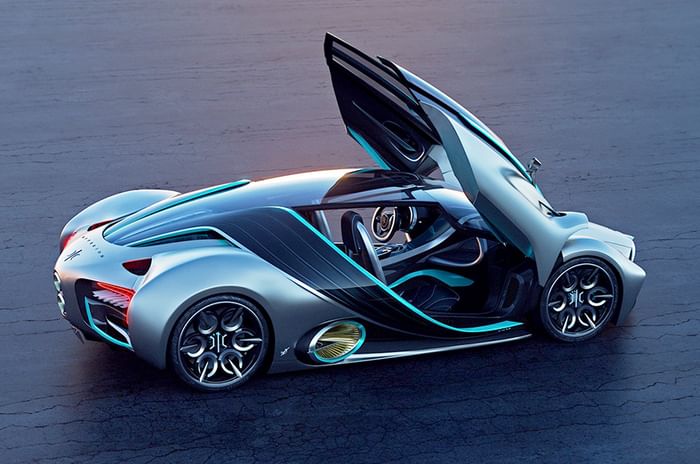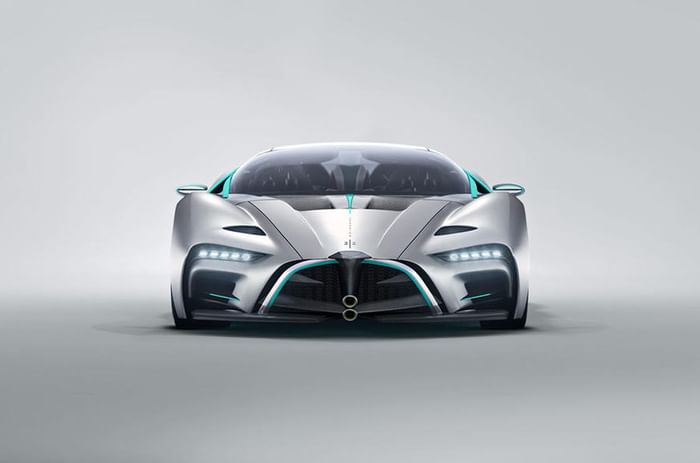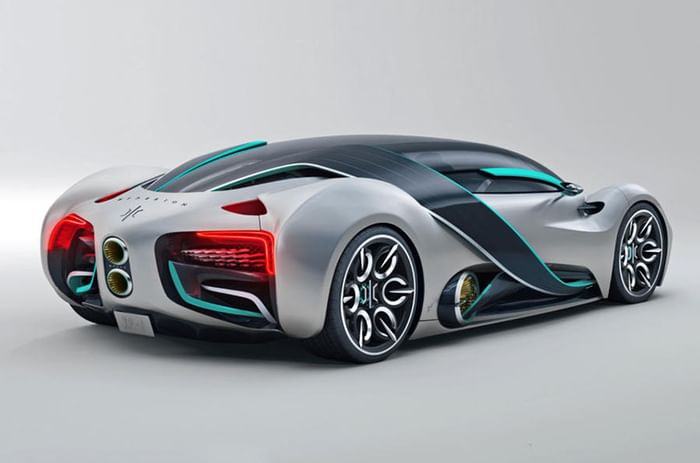The hydrogen-powered Hyperion XP-1 has been revealed, with the company planning to put the alternatively fuelled supercar into production in 2022.
- Powertrain combines hydrogen fuel-cell technology with supercapacitors.
- Claimed to have range of over 1,600km between refills.
What details have been revealed about the Hyperion XP-1?
The two-seat XP-1 combines hydrogen fuel cells with supercapacitor storage to power multiple electric motors. Drive is sent to all four wheels, and though performance details are limited, the company claims it will be capable of a 356kph top speed and should manage 0-96kph in 2.2sec.

The XP-1's carbon-fibre hydrogen tanks will hold enough fuel for over 1,600km of driving at street-legal speeds and can be refilled in less than 5min. The XP-1 will also feature active aerodynamics that double as solar panels, articulating to follow the position of the sun when not improving cornering at high speeds.
Why use supercapacitors?
Supercapacitors are smaller and lighter than traditional lithium-ion batteries, allowing the XP-1 a kerb weight of just 1,032kg. Hyperion claims this gives it a handling advantage over similarly potent battery-electric supercars, which are much heavier.

Unlike current BEV technology, which can overheat after running at peak performance for extended periods, supercapacitors aren't affected by extreme temperatures and will deliver consistent performance. And while they can't hold as much energy, a 1:1 charge-to-discharge ratio indicates higher efficiency.
The recently revealed Lamborghini Sián FKP 37 hybrid hypercar also uses this technology but relies solely on regenerative braking to recharge its small battery.
When can you expect it to go into production?

The XP-1 is currently only in its prototype stage. The California-based company aims to begin production on the XP-1 in 2022, with volume being restricted to just 300 units worldwide.
Could it be coming to India?
While it could be possible to privately import the Hyperion XP-1 to India, our country currently lacks public hydrogen filling stations to support the car’s hydrogen fuel-cell technology. We have, however, sampled hydrogen fuel cell technology in a more mass-produced car, the Toyota Mirai. You can read about it here.




Comments
Member Login
Personal Details
No comments yet. Be the first to comment.